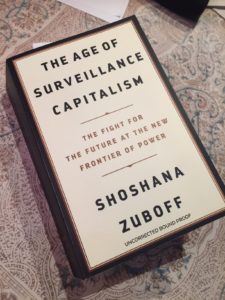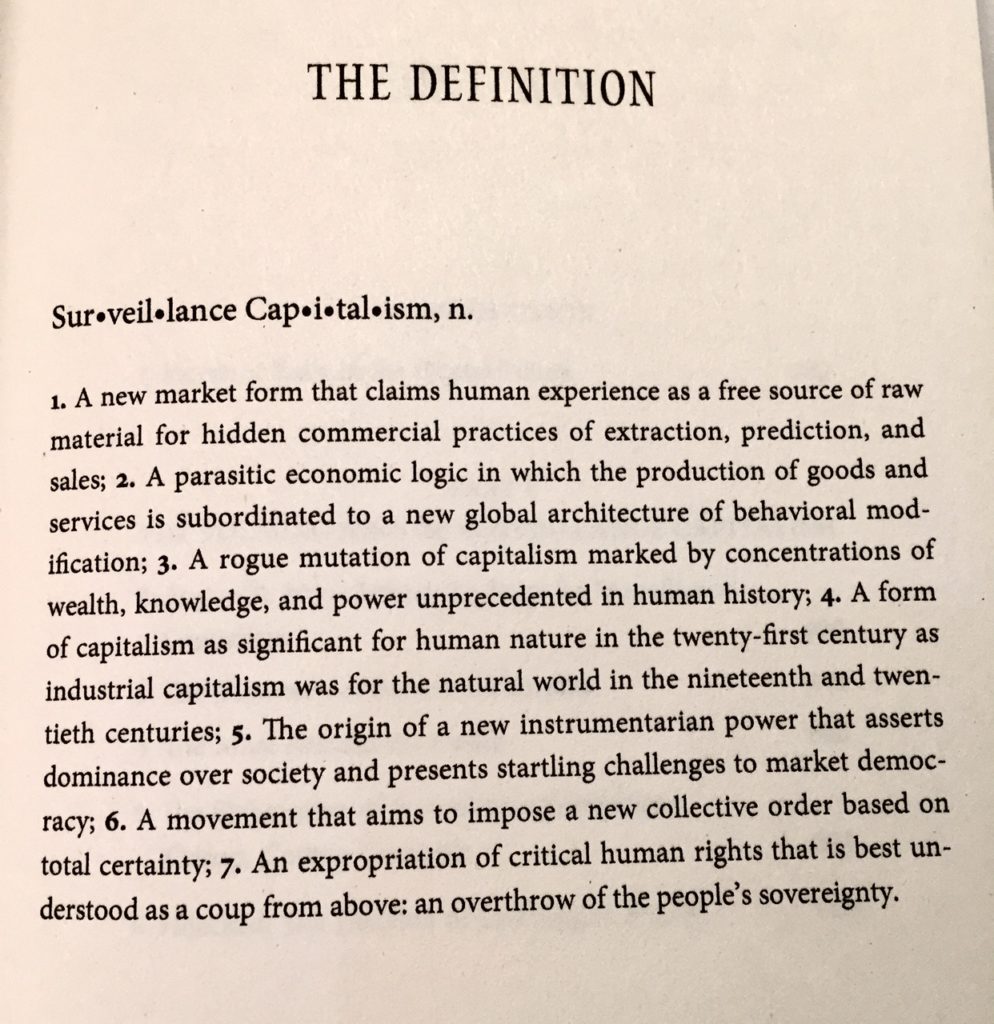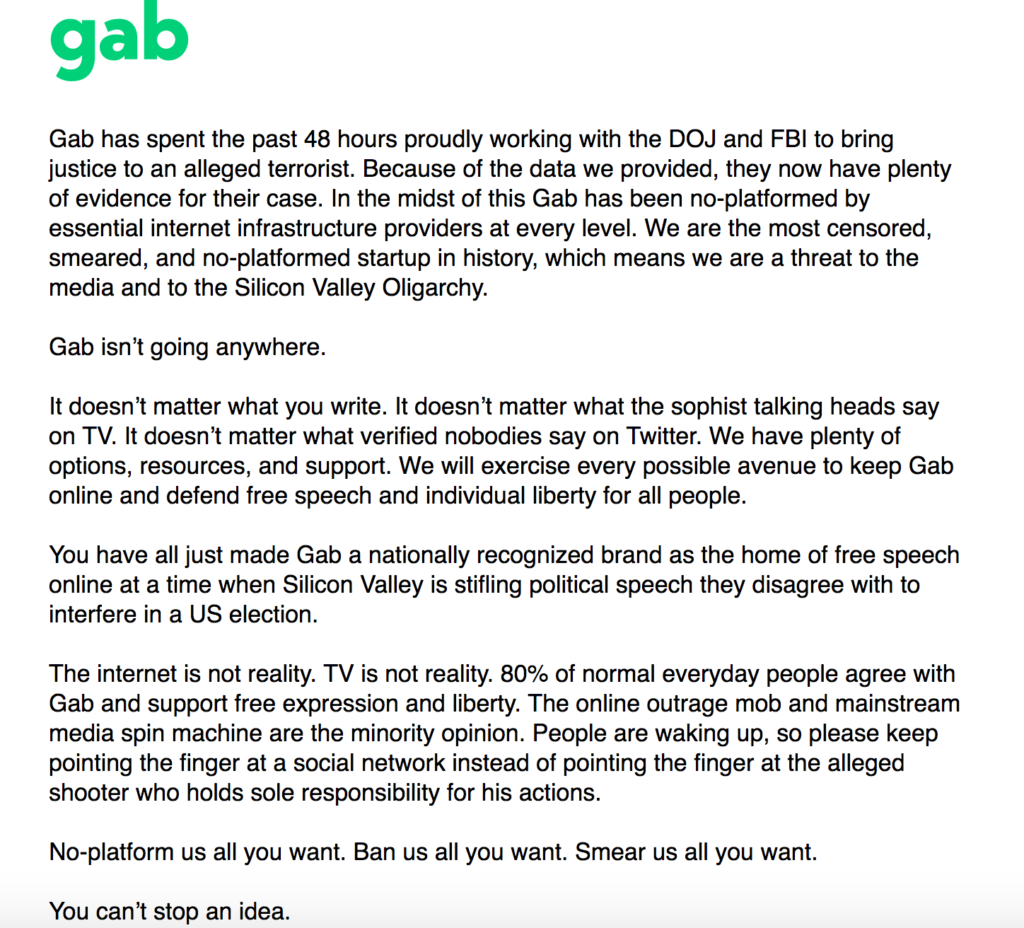This is madness, utter madness.
Category Archives: Politics
Zuckerberg’s monster
Here’s an edited version of a chapter I’ve written in a newly-published book – Anti-Social Media: The Impact on Journalism and Society, edited by John Mair, Tor Clark, Neil Fowler, Raymond Snoddy and Richard Tait, Abramis, 2018.
Ponder this: in 2004 a Harvard sophomore named Zuckerberg sits in his dorm room hammering away at a computer keyboard. He’s taking an idea he ‘borrowed’ from two nice-but-dim Harvard undergraduates and writing the computer code needed to turn it into a social-networking site. He borrows $1,000 from his friend Eduardo Saverin and puts the site onto an internet web-hosting service. He calls it ‘The Facebook’.
Fourteen years later, that kid has metamorphosed into the 21st-century embodiment of John D Rockefeller and William Randolph Hearst rolled into one. In the early 20th century, Rockefeller controlled the flow of oil while Hearst controlled the flow of information. In the 21st century Zuckerberg controls the flow of the new oil (data) and the information (because people get much of their news from the platform that he controls). His empire spans more than 2.2bn people, and he exercises absolute control over it — as a passage in the company’s 10-K SEC filing makes clear. It reads, in part…
Surveillance Capitalism
Gab, Gab, Gab
From ArsTechnica:
Gab, a “free speech” alternative to Twitter that’s popular with the far right, has been shut down after losing service from a number of mainstream technology platforms, including PayPal, Joyent, Medium, and GoDaddy.
“Gab is under attack,” the company’s home page now reads. “We have been systematically no-platformed by App Stores, multiple hosting providers, and several payment processors.” Gab is working to get back online using new service providers.
The attacks on Gab follow revelations that the man accused of Saturday’s deadly mass shooting at the Tree of Life Synagogue in Pittsburgh appeared to be a regular Gab user. An account with his name was “rife with anti-refugee, anti-Semitic and white supremacist posts,” according to The Washington Post. One post complained about a “kike infestation.”
Here’s the aforementioned front page:
Note the claim about “80% of normal everyday people”. This is typical of the alt-right strategy of always claiming victimhood when challenged or banned. In an interesting Vanity Fair piece, Tina Nguyen quotes some of the posts that appeared on Gab celebrating what the alleged killer (Robert Bowers) had done. For example:
“I can’t wait to hear about how many lampshades the alleged synagogue shooter made out [sic] these jews in Pittsburg,” wrote @EmilyAnderson, followed by three laughing cat emojis; another user predicted that Bowers’s statement—“All these Jews have to die”—would “be a meme as long as the Internet lives. Which wont [sic] be long after this LOL.”
This is so utterly revolting that it beggars description. But it will not only continue — and will probably increase. As Nguyen observes,
the existence of Gab reflects a larger trend on the right, wherein those banished from mainstream social-media sites create evermore extreme platforms on which to express themselves. Fox News initiated this trend more than two decades ago: the cable channel was explicitly founded to offer a conservative take on the news, while Andrew Breitbart built his namesake site to cater to an even more conservative audience. The bigger the Internet has become, and the lower the cost of entry, the more likely sites like Gab.com and those further afield will proliferate—not just as social hubs, but as an alternate Internet with its attendant-support networks.
The deeper problem here is about what the Internet has revealed about humans. I’ve argued for a long time that one way of interpreting it is to think of the network as holding up a mirror to human nature. Much of what we see in it is uplifting, informative, inspirational and/or banal — unproblematic, in other words. But the mirror also reflects many of the ugliest sides of human nature, and the technology gives expression to that in ways that has real-world effects. Which is why the riposte that all those ugly sides of human nature already existed in the pre-Internet age rather loses its force: in earlier times, this ugliness was more localised and generally had limited traction (though of course there were genocidal exceptions). Now it can find expression anywhere.
It’s also strange how the technology seems to lead some people inexorably towards more and more extreme views — and then to action. Take the mail-bomb suspect, Cesar Altieri, whose social-media activities were usefully chronicled by the New York Times:
Until 2016, Cesar Altieri Sayoc Jr.’s life on social media looked unremarkable. On his Facebook page, he posted photos of decadent meals, gym workouts, scantily clad women and sports games — the stereotypical trappings of middle-age masculinity.
But that year, Mr. Sayoc’s social media presence took on a darker and more partisan tone. He opened a new Twitter account and began posting links to sensational right-wing news stories, adding captions like “Clinton busted exposed rigging entire election.” On Facebook, his anodyne posts gave way to a feed overflowing with pro-Donald Trump images, news stories about Muslims and the Islamic State, far-fetched conspiracy theories and clips from Fox News broadcasts.
By the time he was arrested in Florida on Friday, charged with sending pipe bombs to at least a dozen of President Trump’s critics, Mr. Sayoc appeared to fit the all-too-familiar profile of a modern extremist, radicalized online and sucked into a vortex of partisan furor. In recent weeks, he had posted violent fantasies and threats against several people to whom pipe bombs were addressed, including Representative Maxine Waters, a California Democrat, and former Vice President Joseph R. Biden Jr. His vehicle, a white van plastered with right-wing slogans, came to resemble a Facebook feed on wheels.
So he went from posting pictures of women, real estate, dining and cars to posting pictures of ISIS, guns and people in jail — and then to posting mail-bombs to prominent Democrats.
Anti-semitism continues to thrive online
From today’s New York Times:
SAN FRANCISCO — On Monday, a search on Instagram, the photo-sharing site owned by Facebook, produced a torrent of anti-Semitic images and videos uploaded in the wake of Saturday’s shooting at a Pittsburgh synagogue.
A search for the word “Jews” displayed 11,696 posts with the hashtag “#jewsdid911,” claiming that Jews had orchestrated the Sept. 11 terror attacks. Other hashtags on Instagram referenced Nazi ideology, including the number 88, an abbreviation used for the Nazi salute “Heil Hitler.”
The Instagram posts demonstrated a stark reality. Over the last 10 years, Silicon Valley’s social media companies have expanded their reach and influence to the furthest corners of the world. But it has become glaringly apparent that the companies never quite understood the negative consequences of that influence nor what to do about it — and that they cannot put the genie back in the bottle.
“Social media is emboldening people to cross the line and push the envelope on what they are willing to say to provoke and to incite,” said Jonathan Albright, research director at Columbia University’s Tow Center for Digital Journalism. “The problem is clearly expanding.”
When will this penny drop, one wonders. These companies can’t fix this problem, because their business models depend on allowing people to do what they like — and then reacting, ineffectually, after the fact.
Why political correctness has disabled the Democrats
Interesting — and I think perceptive — column by Tyler Cowen:
Imagine the perfect political and intellectual weapon. It would disable your adversaries by preoccupying them with their own vanities and squabbles, a bit like a drug so good that users focus on the high and stop everything else they are doing.
Such a weapon exists: It is called political correctness. But it is not a weapon against white men or conservatives, as is frequently alleged; rather, it is a weapon against the American left. To put it simply, the American left has been hacked, and it is now running in a circle of its own choosing, rather than focusing on electoral victories or policy effectiveness. Too many segments of the Democratic Party are self-righteously talking about identity politics, and they are letting other priorities slip.
Piketty: our politics is now about Brahmin vs Merchant elites
Fascinating paper by Thomas Piketty. He constructs a long-run data series from post-election to document a striking long-run evolution in the multi-dimensional structure of political cleavages in the US, UK and France.
The nub of it is this:
In the 1950s-1960s, the vote for “left-wing” (socialist-labour-democratic) parties was associated with lower education and lower income voters. This corresponds to what one might label a “class-based” party system: lower class voters from the different dimensions (lower education voters, lower income voters, etc.) tend to vote for the same party or coalition, while upper and middle class voters from the different dimensions tend to vote for the other party or coalition.
Since the 1970s-1980s, “left-wing” vote has gradually become associated with higher education voters, giving rise to what I propose to label a “multiple-elite” party system in the 2000s-2010s: high- education elites now vote for the “left”, while high-income/high-wealth elites still vote for the “right” (though less and less so) — i.e. the “left” has become the party of the intellectual elite (Brahmin left), while the “right” can be viewed as the party of the business elite (Merchant right).
I show that the same transformation happened in France, the US and Britain, despite the many differences in party systems and political histories between these three countries.
This links to the observations of Daniel Rodgers summarised below.
The task facing liberals now
This from a very perceptive essay by Daniel Rodgers:
More realistically, liberals must find ways to win back some of those who swung to Donald Trump’s camp. Populists, the press routinely calls them. But aside from their distrust of distant experts and cosmopolitan elites, Trump’s core voters have little in common politically with the People’s Party of the American 1890s. The 1890s Populists, like today’s Trump supporters, sometimes fell for terribly oversimplified answers. But the Populists hurled their political fury at the forces of organized money: the bankers, the monopolists, the railroad magnates, and the politicians who wrote the back-room deals of the money-men into law. The conviction that powers Trump voters’ imaginations is just the reverse. Theirs is a world in which not capitalist institutions but the political establishment hogs the seats of power. In their minds, government rigs the game for its own advantages, tying up the potential expansive force of business with rules that only serve to keep the regulators in jobs and the poor as their clients. Only through this story is it possible to redirect anger at plant closings from the corporations who order them to the liberal establishment that is said to be covertly responsible.
In the long run…
Adam Tooze has an amazingly informative and thoughtful review in the LRB of Geoff Mann’s book on Keynes and Keynesianism.
If you were seeking an example of Keynesian government today you wouldn’t look first to the West, but to China, where a Communist Party that brooks no opposition presides over a technocratic regime par excellence. Not only are China’s economic managers hard-headedly pragmatic in their approach to the politics of the market, but the deeper impetus for the policy-makers in Beijing is, in Mann’s sense, truly Keynesian. What is at stake is the post-Tiananmen compromise: accept and support the regime in exchange for growth and social transformation. Much has been made of the role of neoliberal thinkers in launching Deng’s market revolution in the 1980s. But when the going gets rough, the Chinese turn Keynesian. Beijing’s response to the 2008 crisis was the most dramatic work-creation stimulus in history. When in 2009 the governor of the People’s Bank of China proposed a new global currency system, he explicitly invoked Keynes’s proposals at Bretton Woods. Beijing’s successful management of China’s growth involves exchange controls, guidance of the exchange rate and direct regulation of bank lending – techniques reminiscent of 1950s Keynesian fine-tuning. And President Xi’s current personal priority is the elimination of the final residuum of absolute poverty by means of large-scale resettlement and investment.
Tooze is very good on the intrinsic pragmatic ad-hocery of a Keynesian approach to policy. “It isn’t by accident”, he writes,
that ‘when liberal government comes face to face with necessity, it “goes Keynesian”’; in other words it ‘acknowledges uncertainty and disarticulation, recognises imperfection and indeterminacy, and turns away from the long run to the immediacy of the moment’. The crisis of 2008 was a classic demonstration of this. What central bankers like Bernanke were asking politicians to do in September and October 2008 had been unthinkable only weeks before.
But the Chinese regime isn’t in the business of ad-hocery. And they are — like all of us, but perhaps in a more extreme way — faced with the problem of climate change. “Xi’s ‘Chinese dream’”, says Tooze, “is the most spectacular Keynesian promise ever made”.
The underlying fear of domestic unrest is palpable, the scale of repression is astonishing, but so is the gamble on growth. There is no counterpart in Western experience to the astonishing transformation in the fortunes of a population of more than a billion people in a matter of thirty years. But like any instance of rapid capitalist growth, China’s boom is fraught with danger. The country’s finances are highly unstable. The boom generates deep inequality at home, while abroad it incurs the envy of the United States, a declining hegemon with erratic politics and a track record of aggression. Added to which few places on earth experience the environmental costs of growth more acutely than China. Large parts of the country are at risk of becoming uninhabitable. The promise of growth is more real and more life-altering than ever. But so too is the possibility of catastrophe. Keynesians insist that we resist the blandishment of future calm to focus on the turmoil of the present. But on a rapidly warming planet, the waters are calmer now than they will be later. Just decades from now, a large part of humanity may count itself lucky if it is only in the long run that we are all dead.
Fabulous essay, well worth reading in full.
The Trump circus
Michael Lewis has a new book about how the combustible cocktail of wilful ignorance and venality that is the Trump regime is fuelling the destruction of a country’s fabric. Here’s a sample from the chapter on the transition:
Not long after the people on TV announced that Trump had won Pennsylvania, Jared Kushner grabbed Christie anxiously and said: “We have to have a transition meeting tomorrow morning!” Even before that meeting, Christie had made sure that Trump knew the protocol for his discussions with foreign leaders. The transition team had prepared a document to let him know how these were meant to go. The first few calls were easy – the very first was always with the prime minister of Great Britain – but two dozen calls in you were talking to some kleptocrat and tiptoeing around sensitive security issues. Before any of the calls could be made, however, the president of Egypt called in to the switchboard at Trump Tower and somehow got the operator to put him straight through to Trump. “Trump was like … I love the Bangles! You know that song Walk Like an Egyptian?” recalled one of his advisers on the scene.
That had been the first hint Christie had of trouble…




